Introduction
Ba Zhen Gao, often translated as “Eight Treasures Cake,” is a revered traditional Chinese pastry renowned for its harmonious blend of medicinal herbs and nourishing ingredients. Rooted in the principles of Traditional Chinese Medicine (TCM), this dessert is designed to tonify the spleen, replenish qi (vital energy), and promote overall well-being. Central to its preparation is the meticulous processing of its eight core ingredients, each chosen for its unique therapeutic properties. Among these, certain components require pre-frying—a culinary technique that enhances their efficacy, reduces potential side effects, and ensures optimal flavor integration. This article delves into the scientific and cultural rationale behind pre-frying specific ingredients in Ba Zhen Gao, exploring the methods, benefits, and historical significance of this practice.
The Eight Treasures: An Overview
Before dissecting the pre-frying process, it is essential to identify the eight ingredients that constitute Ba Zhen Gao. While recipes may vary slightly, the classical formulation includes:
- Ginseng (Ren Shen): A potent qi tonic.
- Codonopsis Pilosula (Dang Shen): A milder alternative to ginseng.
- Poria Cocos (Fu Ling): A fungus used to drain dampness.
- Atractylodes Macrocephala (Bai Zhu): A root that strengthens the spleen.
- Chinese Yam (Shan Yao): A tuber renowned for its nourishing effects.
- Lotus Seeds (Lian Zi): Astringent and calming.
- Lily Bulb (Bai He): Moistening and lung-soothing.
- Fried Ginger (Pa Jiang): A warming spice.
Of these, ginseng, codonopsis, atractylodes, Chinese yam, and lotus seeds are typically subjected to pre-frying. The following sections elucidate why and how each is processed.
Ginseng (Ren Shen): The King of Tonics
Ginseng, revered as the “elixir of life” in TCM, is prized for its ability to invigorate qi, boost vitality, and enhance cognitive function. However, raw ginseng contains saponins that may irritate the digestive system, particularly in sensitive individuals. Pre-frying mitigates this risk by:
- Reducing Harshness: Frying in honey or maltose syrup caramelizes the root’s surface, creating a protective layer that slows the release of active compounds.
- Enhancing Sweetness: The Maillard reaction during frying imparts a subtle sweetness, balancing ginseng’s natural bitterness.
- Modulating Properties: Heating transforms ginseng’s cooling nature into a neutral or slightly warming tonic, making it suitable for broader constitutions.
Method:

- Slice ginseng into thin discs.
- Stir-fry over low heat with honey until golden-brown.
- Cool and grind into a fine powder.
Codonopsis Pilosula (Dang Shen): The Gentle Substitute
Codonopsis, often dubbed “poor man’s ginseng,” shares similar qi-tonifying properties but is milder and less likely to cause heatiness. Pre-frying codonopsis serves dual purposes:
- Amplifying Efficacy: Heat activates the root’s polysaccharides, enhancing immune-modulating effects.
- Improving Digestibility: Frying breaks down fibrous tissues, facilitating nutrient absorption.
Method:
- Soak codonopsis in water for 2 hours to soften.
- Drain and stir-fry with a minimal amount of sesame oil until slightly crisp.
- Pulverize into a coarse powder.
Atractylodes Macrocephala (Bai Zhu): The Spleen Fortifier
Atractylodes is a cornerstone of spleen-tonifying formulas in TCM. Its primary role is to eliminate dampness and strengthen digestion. Pre-frying is critical here because:
- Neutralizing Coldness: Raw atractylodes has a cooling bias, which may disrupt stomach qi. Frying with bran or wheat flour imparts a warming quality.
- Enhancing Astringency: Heat treatment increases the root’s ability to bind the intestines, preventing diarrhea.
Method:
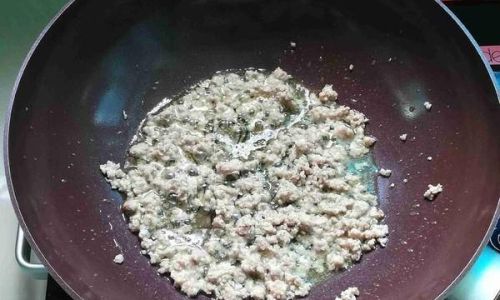
- Coat sliced atractylodes in a thin layer of wheat flour.
- Stir-fry in a dry pan until the flour turns light brown.
- Remove and discard the flour before grinding.
Chinese Yam (Shan Yao): The Nourishing Tuber
Chinese yam is celebrated for its dual action: tonifying the spleen and moistening the lungs. Pre-frying serves to:
- Eliminate Slipperiness: Raw yam contains mucilage that may cause bloating. Frying denatures these proteins, reducing digestive discomfort.
- Concentrating Starch: Heat transforms starches into resistant dextrins, which act as prebiotics, nourishing gut flora.
Method:
- Peel and slice yam into thin rounds.
- Deep-fry in peanut oil at 160°C (320°F) until golden.
- Drain on paper towels and crush lightly.
Lotus Seeds (Lian Zi): The Calming Gem
Lotus seeds are astringent and heart-soothing, making them ideal for restlessness and insomnia. Pre-frying offers:
- Reducing Astringency: Raw lotus seeds have a pronounced puckering taste. Frying mellows this effect.
- Activating Lipids: Heat releases beneficial fatty acids, enhancing the seeds’ nutritional profile.
Method:
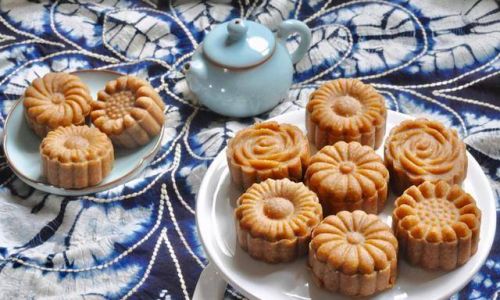
- Remove green embryos from dried lotus seeds.
- Stir-fry in a wok with a pinch of salt until fragrant.
- Grind into a powder, avoiding over-processing to retain texture.
The Science Behind Pre-Frying
From a biochemical perspective, pre-frying alters the phytochemical composition of herbs through:
- Caramelization: Sugars in honey or maltose react with amino acids, creating flavorful compounds like furans and pyrazines.
- Maillard Browning: Heat induces non-enzymatic reactions, generating antioxidants and reducing anti-nutritional factors.
- Enzyme Inactivation: Frying denatures heat-sensitive enzymes that might otherwise degrade active ingredients during storage.
Cultural and Historical Context
The practice of pre-frying in TCM pastry-making dates back centuries. Ancient texts like the Ben Cao Gang Mu (Compendium of Materia Medica) emphasize the importance of “processing before formulation” (pao zhi). For Ba Zhen Gao, this step was not merely culinary but alchemical—a means to harmonize the ingredients’ energies (yin and yang) and align them with the consumer’s constitution.
Modern Adaptations and Controversies
While traditionalists swear by pre-frying, contemporary producers sometimes bypass this step to save time. However, skipping pre-frying may lead to:
- Reduced Efficacy: Unprocessed herbs may not release their full therapeutic potential.
- Digestive Issues: Raw atractylodes or yam can cause bloating in sensitive individuals.
- Flavor Imbalance: The absence of caramelized notes may result in a bland or overly earthy taste.
Critics argue that modern dehydration and milling techniques obviate the need for pre-frying. Yet, proponents counter that heat remains irreplaceable for certain transformations, such as the Maillard reaction’s flavor development.
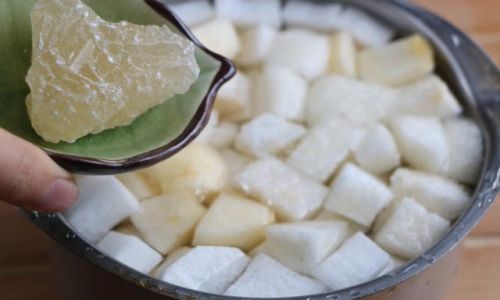
The Role of Pre-Frying in Ba Zhen Gao’s Efficacy
Ba Zhen Gao’s reputation as a “functional food” hinges on the synergy between its ingredients. Pre-frying ensures this synergy by:
- Balancing Energetics: Frying harmonizes cold and hot properties, preventing energy clashes.
- Enhancing Bioavailability: Heat breaks down cell walls, liberating active compounds like ginsenosides and polysaccharides.
- Preserving Shelf Life: Fried ingredients are less prone to mold and rancidity due to reduced moisture.
Conclusion
The pre-frying of select ingredients in Ba Zhen Gao is a testament to TCM’s holistic approach to food and medicine. By subjecting ginseng, codonopsis, atractylodes, Chinese yam, and lotus seeds to controlled heat, practitioners elevate this pastry from a mere dessert to a potent therapeutic agent. The process reflects a deep understanding of herbal pharmacology, culinary artistry, and the delicate balance between nourishment and healing. As modern consumers increasingly seek functional foods, the wisdom embedded in Ba Zhen Gao’s preparation offers a timeless blueprint for harmonizing health and flavor. Whether enjoyed as a daily tonic or a ceremonial treat, this eight-treasure cake remains a shining example of China’s enduring culinary-medicinal heritage.
Final Note: While this article provides a comprehensive overview, readers are advised to consult a licensed TCM practitioner before incorporating Ba Zhen Gao into their wellness regimen, as individual constitutions and health conditions may warrant ingredient adjustments.
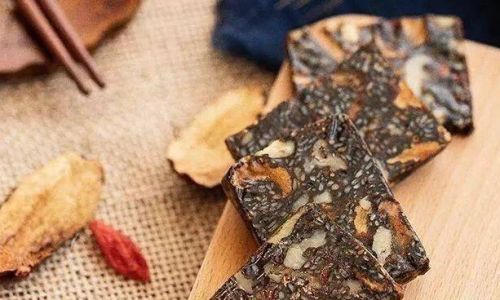
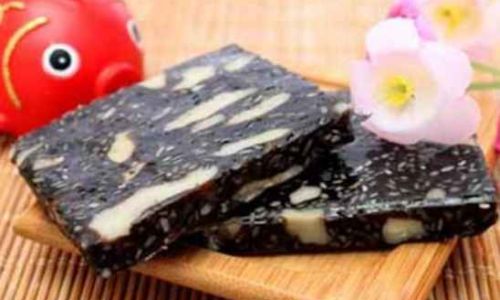

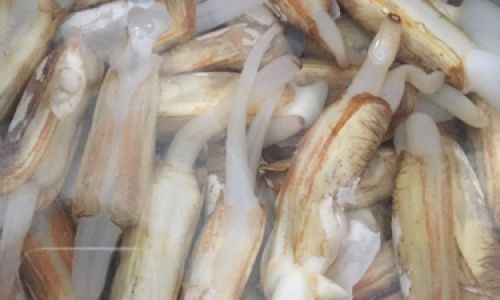
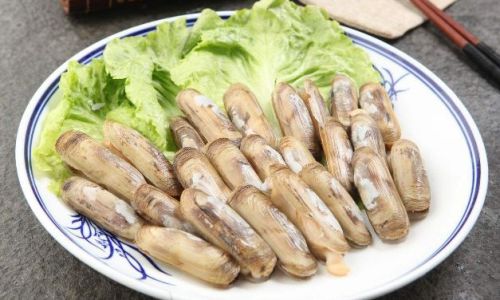
0 comments